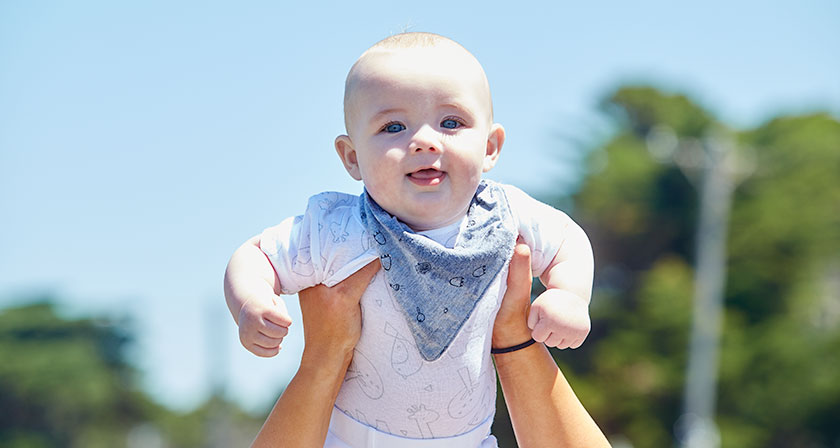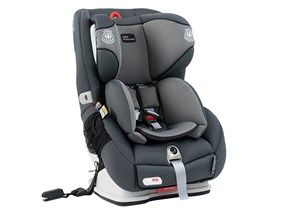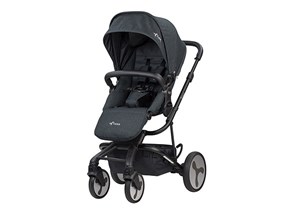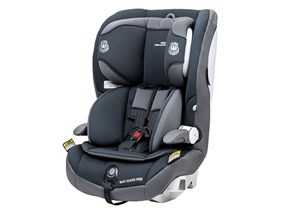Protecting And Nurturing The Loved Ones Of The Ones We Love

As we all well know, raising a family can be quite a juggling act. Working parents often find they need to combine childcare with a number of different resources, and are also turning to grandparents and other relatives for assistance. This blended approach can also aid in making a return to work more financially feasible.
Those with access to reliable, enthusiastic secondary carers will tell you that the rewards are not merely financial. As a grandparent myself, I can attest to how fulfilling the hours spent caring for and nurturing grandchildren can be.
This one-on-one time spent incidentally teaching, talking to and playing with my grandchildren has had benefits on both sides. Intergenerational interaction can make the old feel young and the young feel special—an ideal childcare solution.
For many of us, however, our own children have long been out of the family home. It is easy to become overwhelmed, having to navigate our way through all the safety, health and childcare issues associated with caring for a young child. However, there’s always a way to get your head around it...
Car safety and restraints
The laws surrounding car restraints can come as quite a surprise to grandparents and older carers. Stringent new government safety standards are now universally enforced.
As an example of this, the rule for children aged 7 to 10 years is that they sit in a booster seat—a fact that those of us from older generations are sometimes unaware of.
The Victorian Government guidelines for child restraints can be foundhere, but in a nutshell, they are:
- Babies under 6 months must travel in an authorised rear facing child restraint.
- Babies aged 6 months to 4 years must travel in either an authorised rear facing or forward facing child restraint.
- Children aged 4 years to under 7 years must travel in either a forward facing child restraint with an inbuilt harness, or a booster seat.
- Children aged 7 years to under 16 years must travel in either an authorised booster seat or use an adult seat belt.
- Whilst children over the ages of 7 years can legally travel in the front seat of a car, it is strongly recommended by the Child Accident Prevention Foundation of Australia, that those aged under the age of 12 travel in the back seat.
Did you know?
Children between the ages of 7 and 16 are required to use either a booster seat or an adult seat belt - the distinction is dictated by height, not age.
An adult seat belt is designed for people 145cm or over. For the average sized child, this height would be reached between ten to twelve years of age.
A good night’s sleep
Just as with vehicle restraints, times have changed in the area of bassinets and cots for babies and young children. My cherished family heirloom, which once catered for generations of my family’s offspring, is now relegated to strictly a ‘dolls only’ status.
Nursery equipment, materials and designs must all meet the Australian and New Zealand Safety Standards (AS/NZS 2172:2003). To get your head around this, check out the full list of requirements here.
Some safety tips I’ve found of value are:
- Keep cots and bassinets well away from both curtain and electrical cords
- Avoid pillows, bumper pads stuffed animals or comforters
- Use fitted sheets and a wearable blanket. Keep them warm as they will sleep longer if they aren’t woken by the cold.
Back to basics: lifting logic
For those of us suffering back issues, lifting young children in and out of a cot can be an excruciating experience. In these instances, it may be wise to consider having the child fall asleep in the comfort of their stroller, whilst out on a walk.
In my experience, walking children to sleep provides the double benefit of:
- avoiding the necessity of having to bend to lift a child in and out of a deep cot
- the gentle motion of the stroller lulls children to sleep.
When I return home, the stroller acts as a mobile bed which moves from room to room with me, allowing me to keep an eye on the sleeping infant.
The Britax Hi-Lo high chairs are another innovative solution for saving stress on your back. I have a portable model, which can be easily folded and transported to ensure I am always equipped for meal times.
Successful safety: securing your home
Childproofing your home can involve a lengthy checklist of safety hazards. Most come down to common sense but we tend to forget how resourceful youngsters can be at getting places they don’t belong.
With that in mind, look out for:
- Swimming pools—ensure all water deeper than 30cm is securely fenced off, according to Australian safety standards. Keep movable items of furniture, or anything that can be climbed on top of, well away from the area of the pool fence.
- Ensure the floors are clear of any small items which could present a choking hazard.
- Lock away all poisonous and hazardous substances preferably in a locked shed or garage.
- Turn pot handles so they can’t be accessed by small hands.
- Store plastic bags well out of reach.
- Secure curtain cords well out of reach or shorten them permanently. Consider replacing them with a cord-free option.
- Remove heavy items from furniture and ensure these items are sturdy and can’t be pulled over.
- Consider non-slip rugs on floors which are tiled or have an unforgiving surface.
- Turn down the temperature of your hot water system and make sure your bath doesn’t have flip-style tap handles, as these are too easy for a young child to operate.
- Use safety gates on stairs, both top and bottom.
Whilst the above list is far from comprehensive, it serves as a good place to start. I’ve found it important to keep in mind that even children who don’t appear to be crawling yet can seem to magically appear across the other side of a room when your back is turned.
Amusing moments: keeping young minds entertained
As a carer, you have a valuable opportunity to provide babies and children with a novel set of learning skills that they may not otherwise have been exposed to. Traditional songs and games still delight young minds, particularly when there are no other distractions around.
In my experience, children prefer to interact and learn, rather than sit passively in front of a device. Provide them with the opportunity and they will be keen to explore, learn and play.
The following suggestions which I’ve found useful—which can be adapted for toddlers, right up to school-aged children—include:
- Taking children and even toddlers out for walks and playing a game of ‘find the house numbers’. Using the process of find, see and say, they will be able to repeat the numbers back to you after a short time.
- Young children love the process of creating, and cooking gives them the feeling of being truly useful, whilst training them in nutrition and safety in the kitchen.
- Children delight in the ‘magic’ of seeing things they have planted grow in the garden. This is especially so with small veggie gardens where they can eat the ‘fruit’ of their labours.
- Babies under six months can be a little trickier to keep occupied, as their communication is limited. They are most happy when they are kept close to you, so the use of a rocker, which can be moved around the house, is ideal.
- Between the ages of six months and one year, the convenience of a walker allows a feeling of mobility and independence. Remember to have stair gates securely installed.
- Allow babies some ‘tummy time’ to develop crawling and walking skills.
- Provide babies with bright, safe toys to encourage the development offline motor skills.
Perhaps like me, you have reached a point in life where the pace is a little slower. Free from the responsibilities of parenthood we can now savour the luxury of child rearing—to literally stop and smell the roses.
Being able to provide a comfortable safe environment for our little ones is a wonderful way to contribute to the lives of our extended families.




